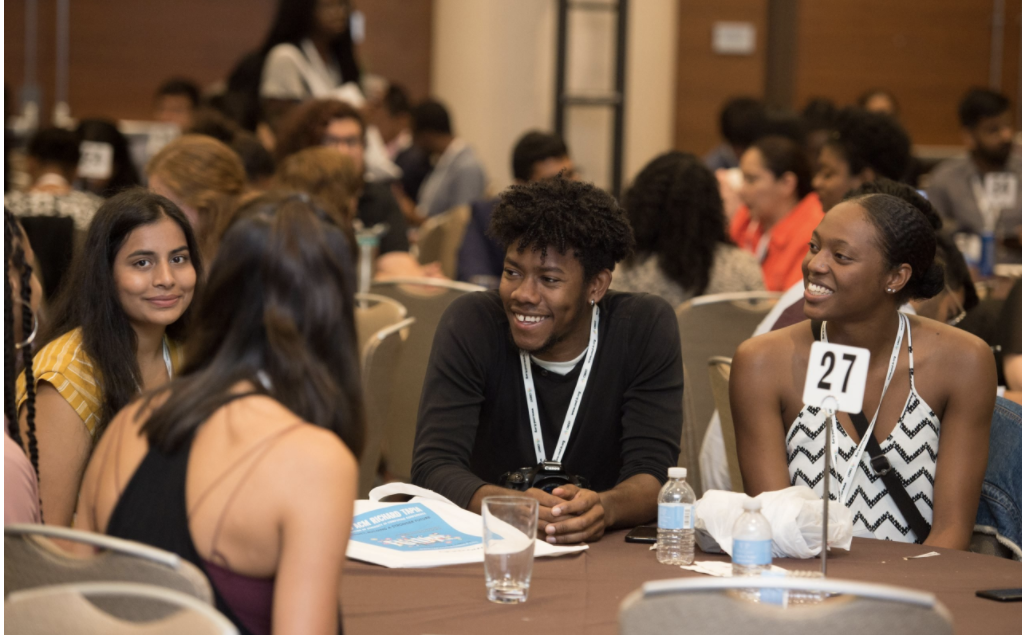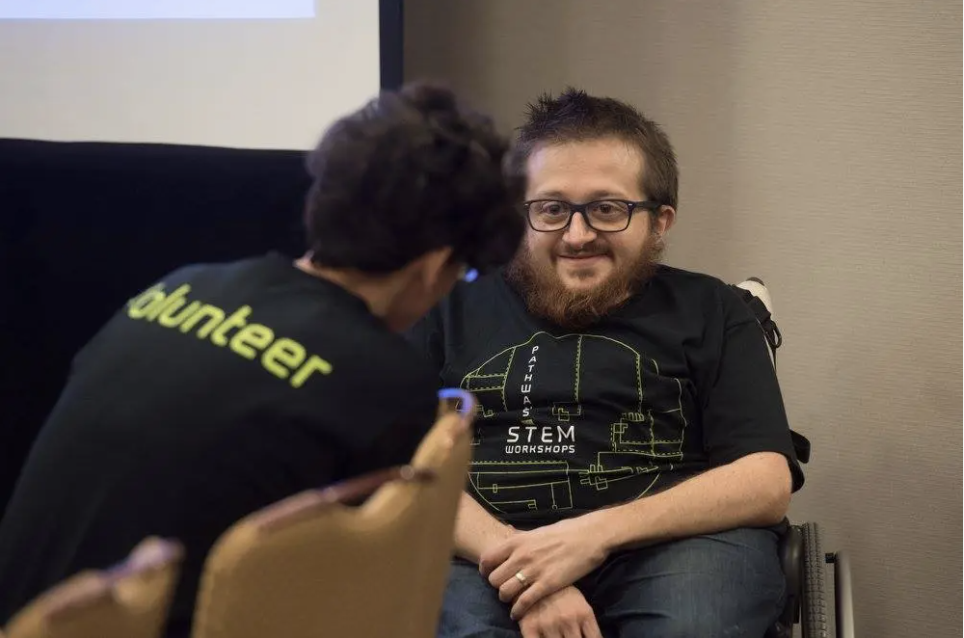We Shouldn’t Have To Hide Our Disability: Is The Tech Industry Doing Enough To Support Disabled People Of Color?

You might have read the article published last year on the Silicon Valley employee who hid his disability from his employers.
In an in-depth piece about his experiences, they started off by saying: “I have a learning disability, meaning that I learn differently from other people. I live and work in Silicon Valley, the natural habitat of road runners. I’ve spent my professional life as one of those worker bees who creates the widgets and doodads that make life a little easier. For the sake of this story—and my employability—let’s just call my company Acme Co.
“Acme Co. can feel like a lonely place when you’re surrounded by road runners. You have to work four times harder to achieve the same output in a workplace that moves at those speeds. For a long time, no one was aware of the effort I put into organizing and planning my life so I could pass as “normal.”
And in 2010, Michelle Moram, a London-based materials scientist who is currently working remotely for Victoria University of Wellington, was diagnosed with a serious autoimmune disorder that would have qualified her for disability protection under the law.
Still, she also kept the illness hidden for years for fear of jeopardizing her chances of promotion.
But these two case studies are not rare. If you take time to scroll through social media, medium blogs, or even LinkedIn you’ll find dozens of similar stories.
Stories like these prove there are still serious issues in the STEM sector when it comes to providing a safe space and a culture where people with disabilities feel they can be open and still level up in their job while not being judged.
Data and people of color
In total – there are over one billion people globally, people with disabilities – those whose hearing, visual, cognitive, mobility, speech or neural functions are impaired – are the largest minority group in the world.
Their inclusion and empowerment are crucial, as it not only benefits the person with disabilities but also family members, who are more likely to leave their jobs to take care of relatives in this situation.

With one in six people globally having disabilities, disability inclusion is vital. Unlike gender, race or age, addressing disability inclusion is challenging, as 70% of disabilities are invisible, and many choose to not be open about them. People with disabilities are 50% less likely to get jobs, and even the jobs they perform tend to be at the lower corporate levels.
People with disabilities with an advanced degree earn $21,000 less annually than people without disabilities, though they have the same education levels.
Previous research by the Harvard Business Review has found that over a third of disabled people have experienced negative bias in their current job.
And the unemployment rate is reportedly twice as high for people with disabilities compared to the general population, even though companies that are inclusive of people with disabilities are considered more financially successful.
When we look at the tech industry and its numbers, it’s clear that the industry is still white and male.
Black people and Latinx continue to lag behind. But what if we broke these numbers down further to find out 1 – how many people in tech have disabilities and 2, how many of these are people of color. The final numbers would be pretty small.
These issues have been spoken about for years but how much is actually being done about it?
Is there improvement?
It’s important to highlight the issues that people with disabilities face getting into STEM but it’s equally important to discuss the tech or digital barriers that prevent them from applying for jobs in the first place.This report discusses the issues impacted by those based in the UK but these experiences, we believe, can be experienced worldwide.
The study entitled, Talent & Technology: Building bridges to employment for disabled people, carried out by the All-Party Parliamentary Group for Assistive Technology heard difficult stories of disabled people unable to look for and obtain work, due to inaccessible technologies; poor digital practices by organizations; and a lack of skills.
“Disabled people are repeatedly shut out of the very schemes designed to offer a starting point in careers; such as apprenticeships or employment support through the job center,” noted the report published just last year.
“Digital access and digital skills are no longer optional for finding work; even in non-tech industries,” said report author Geena Vabulas. “The reality is that many ‘standard’ technologies, websites, and applications are inaccessible to disabled and older people. However, recent advances in technology mean that assistive technology can now remove barriers in a wider variety of settings than ever before.”

Whose doing something about it?
POCIT sat down with Rose Robinson, Executive Director of Center for Minorities and People with Disabilities in IT (CMD-IT), for an in-depth conversation on the barriers facing people of color with disabilities in tech.
Robinson has more than 25 years under her belt. Her role at CMD-IT means she can use this extensive experience to lead efforts to disrupt industries, invest in building an inclusive workforce in computing and IT that elevates minorities and people with disabilities.
Inspired by her personal experience – having a sister who is blind and two nephews with muscular dystrophy – she has been able to campaign for robust change passionately.
CMD-IT is the national Center for Minorities and People with Disabilities in Information Technology that is focused on the following communities: African Americans/Blacks, Native Americans/Indigenous People, Hispanics/Latinx, and People with Disabilities.
It provides information and statistics related to programs, organizations, and alliances focused on African Americans, Native Americans, Hispanics, Pacific Islanders, and People with Disabilities in Computing and Information Technology.
Facilitates projects that involve collaborations between established programs and organizations, and runs workshops and programs to help its community get the necessary skills.
We’re looking to compile a list of charities and organizations that focus on supporting people of color in tech with disabilities.
How can companies do better?
According to Fairplay, companies can start off by proactively removing digital barriers to employment. In the UK – it recommended the government take advantage of existing JobCentre Plus structures to identify and remove digital barriers to employment for all. The DWP should recognize digital access as a key enabler of employment for all customers.
Allowing SMEs to tap into the talent of disabled people. Fairplay also believes the government should improve the targeting of disability support schemes to employers and employees who need them most, and take advantage of existing networks to skill up employers on digital accessibility and inclusive recruitment practices.
Employers should ensure their recruitment and onboarding practices are digitally accessible and inclusive by following guidance produced by Disability Confident Leaders.
Sarina, wrote on her blog ‘Disability in tech: A checklist to get your sh*t together;: ” that there needs to be more people with disabilities in a position of leadership
“Let’s start at the top with Hiring Committees and Human Resources. Oftentimes, job postings state that they welcome candidates from diverse, multicultural and inclusive backgrounds. However, things such as the application, the job portal, and the language used are inaccessible. This leaves people with disabilities out of the hiring pool,” she added.
Sarina went on to say: “It is no longer enough to hire people who are disability-identified or #Allies. To create the systemic change you must put people with marginalized identities and disabilities at the top of leadership. Their knowledge and lived experiences with inaccessibility and oppression are important.
“You said in your latest job posting that your company values diversity — so let’s see it. There are currently lots of diversity hires but let’s be real — the org chart still looks mighty white and abled when we look at who’s sitting at the top. And don’t forget that just because you’re hiring for diversity doesn’t mean you’re hiring for disability. They are not the same thing and you’re ableist if you think they are.”



